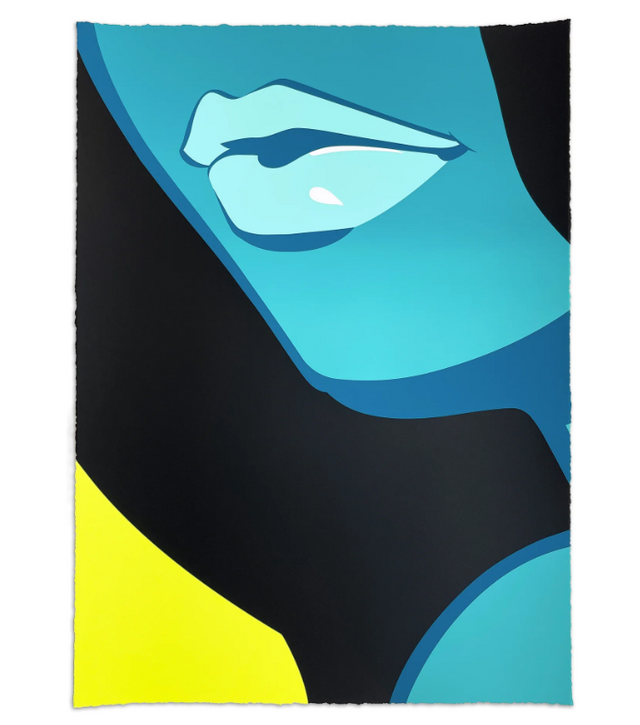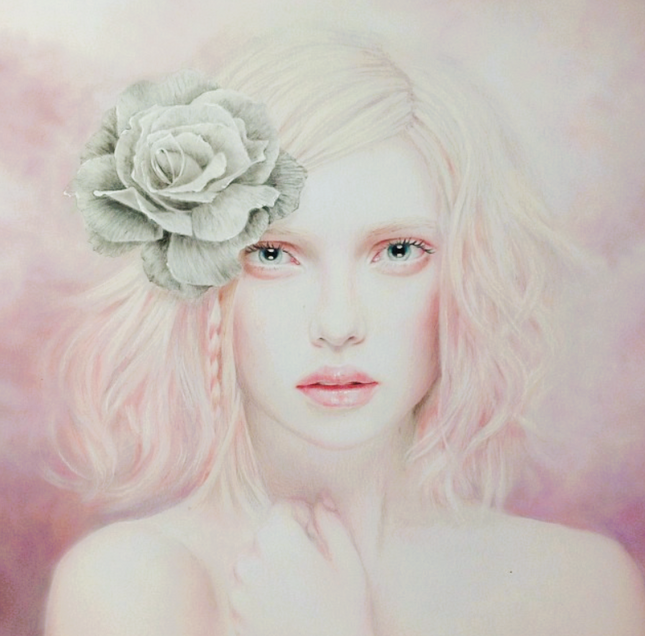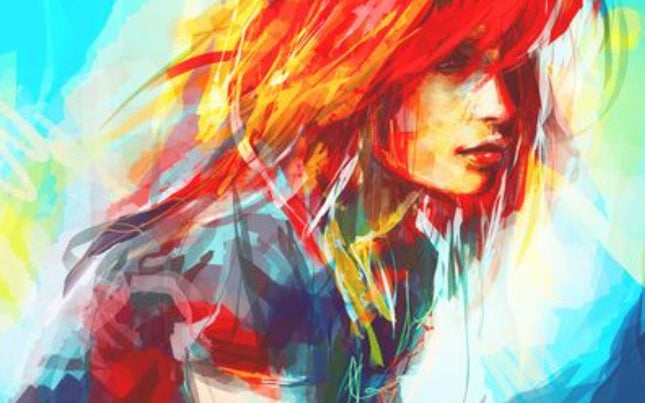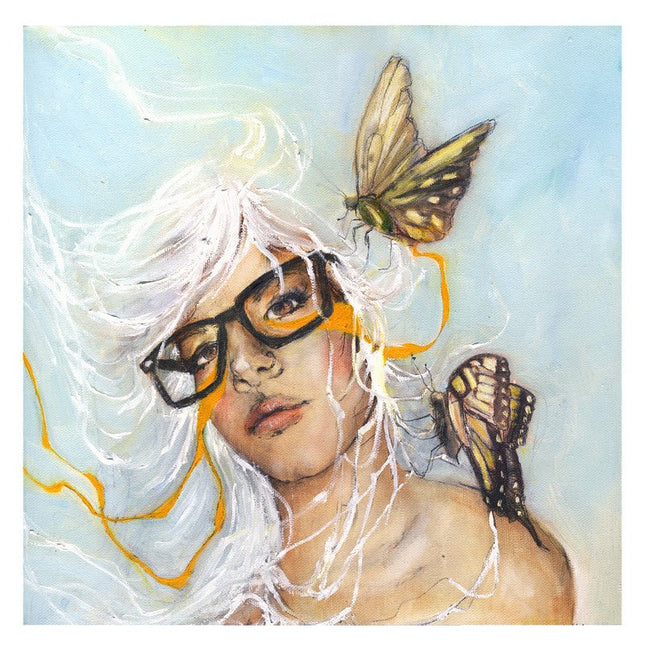
Hair

Bec Winnel Celine Giclee Print by Bec Winnel
Celine Giclee Print by Bec Winnel Artwork Limited Edition Print on Fine Art Paper Graffiti Pop Street Artist. 2014 Signed & Numbered Limited Edition of 25 Artwork Size 12x13 Pale Woman with Flower in Her Hair. The Ethereal Beauty of Celine by Bec Winnel The giclee print titled "Celine" by the Australian artist Bec Winnel is a masterpiece that sits at the intersection of traditional portraiture and Street Pop Art, a limited edition offering that comprises only 25 signed and numbered pieces. This artwork, measuring 11.5x13 inches, captures the viewer's gaze with the delicate depiction of a pale woman adorned with a flower in her hair, a motif ripe with symbolism and quiet introspection. Bec Winnel's approach in "Celine" is one of intimate portraiture. The subject's pale visage and the soft pink tones of her hair offer a stark yet gentle contrast to the bold and often brash world of Street Pop Art and Graffiti Artwork. The flower, a timeless symbol of nature's fleeting beauty, is rendered with such care that it seems to whisper stories of life's transient nature. The artwork, though rooted in the techniques of fine art, communicates the essence of street art through its emotional impact and accessibility. The use of giclee printing ensures that each nuance of Winnel's delicate pencil and pastel work is captured with precision, allowing the fine gradations of color and detail to shine through. This form of high-quality reproduction democratizes art, aligning with the Street Pop Art ethos of making art available to a wider audience beyond the confines of galleries and exclusive collections. Bec Winnel and the Contemporary Art Scene Bec Winnel, while perhaps not as widely recognized as some street artists, has earned a respected place within the contemporary art scene for her distinct blend of realism and fantasy. Her work often features women in moments of deep contemplation, surrounded by elements of the natural world that serve to underline their connection to the environment and to the cycles of life and death. This connection resonates with the thematic preoccupations of Street Pop Art, where the dialogue between the urban landscape and nature is frequently explored. "Celine" represents a poetic pause in the hustle of the street art world, inviting viewers to reflect on the softer side of humanity. The limited edition nature of the print adds a layer of exclusivity, yet Winnel's artistry bridges the gap between the elite art world and the democratic nature of street art. By creating a fine art paper version of her work, she extends an invitation to a broader audience to engage with her art in their own spaces. The allure of "Celine" lies in its ability to evoke a sense of ethereal beauty and vulnerability, characteristics that are often overshadowed in the bustling, dynamic spaces where Street Pop Art and Graffiti Artwork typically reside. The print holds a mirror to the quieter, more reflective aspects of human experience, much like a mural tucked away in a quiet corner of a busy city street might do. The enduring impact of "Celine" is its subtle challenge to the viewer: to slow down, to appreciate the beauty in stillness, and to consider the depth of the human experience. Winnel's choice to portray a woman in a moment of vulnerability is a powerful statement within the broader context of Street Pop Art, often dominated by louder, more aggressive themes. As "Celine" finds its home with collectors and art enthusiasts, it continues to weave its narrative, one that is as relevant today as it was in 2014. It stands as a testament to the possibilities of cross-pollination between the worlds of fine art and street art, a testament to the power of beauty and vulnerability in an often harsh and unforgiving world. Through her art, Bec Winnel contributes to the evolving story of Street Pop Art and Graffiti Artwork, ensuring that the narrative remains as diverse and multifaceted as the human experience itself.
$150.00

Alice X Zhang Airplanes Giclee Print by Alice X Zhang
Airplanes Artwork Giclee Limited Edition Print on Fine Art Paper by Pop Culture Graffiti Artist Alice X Zhang. 2014 Signed & Numbered Limited Edition of 100 Artwork Size 19x13
$242.00

Charmaine Olivia Butterfly Kisses Giclee Print by Charmaine Olivia
Butterfly Kisses Artwork Giclee Limited Edition Print on Fine Art Paper by Pop Culture Graffiti Artist Charmaine Olivia. 2014 Signed & Numbered Limited Edition of 50 Artwork Size 13x13
$209.00




